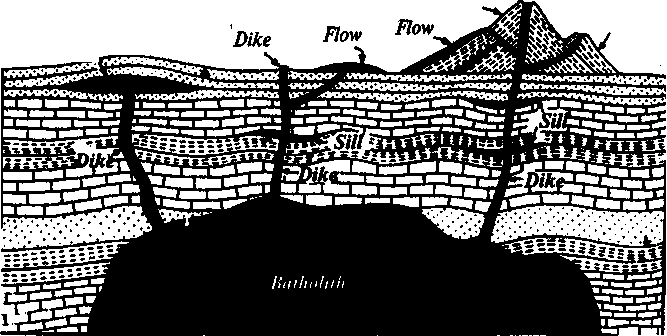
- •1)…Английский для Инженеров Полякова
- •1.Was Einstein a capable or a backward (умственно отсталый) child?
- •1. Действительно ли Эйнштейн был способным или обратным (умственно отсталый) ребенок?
- •2. Какую жизнь Эйнштейн вел?
- •3. Что принесло Эйнштейну больше радости чем что-либо еще?
- •4. Какой иллюстрацией Эйнштейн объяснял свою Теорию Относительности?
- •5. Что два правила поведения имел Эйнштейн?
- •2)…Английский для Инженеров Агабекян
- •Civil Engineering (Гражданское строительство)
- •Mechanical Engineering (Машиностроение)
- •Electrical and Electronics Engineering (Электротехника и Электроника)
- •Electronic engineering (Электроника)
- •Communications and Control (Техника средств связи и управление)
- •Computers engineering (Компьютерная техника)
- •Aeronautical and Aerospace Engineering (Авиакосмическая техника)
- •Naval Engineering (Кораблестроение)
- •Chemical Engineering (Химическое машиностроение)
- •Nuclear Engineering (Ядерная техника)
- •Safety Engineering (Техника безопасности)
- •Что такое разработка?
- •Гражданское строительство (Гражданское строительство)
- •Машиностроение (Машиностроение)
- •Английский для Инженеров Агабекян данный файл принадлежит сайту www.Crypower.Ru Электроника (Электроника)
- •Коммуникации и контроль (Техника средств связи и управление)
- •Аэронавигационная и космическая разработка (Авиакосмическая техника)
- •Военно-морская разработка (Кораблестроение)
- •Английский для Инженеров Агабекян данный файл принадлежит сайту www.Crypower.Ru Химическое машиностроение (Химическое машиностроение)
- •Ядерная разработка (Ядерная техника)
- •Разработка безопасности (Техника безопасности)
- •Современные технические тенденции
- •3)…Английский для Экономистов Агабекян
- •Английский для Экономистов Агабекян данный файл принадлежит сайту www.Crypower.Ru
- •Английский для Экономистов Агабекян данный файл принадлежит сайту www.Crypower.Ru
- •Альтернативные издержки
- •Форма и положение кривых предложения (см. Стр 324-328),
- •Данный файл принадлежит сайту www.Crypower.Ru
- •Закон требования
- •Источники дохода
- •Доход с работы
- •Доход с богатства
- •Куда люди помещают свои сбережения в соединенные штаты?
- •Какие виды кредита доступны?
- •Как установить кредит
- •4)…Английский для Технических университетов и вузов
- •Harnessing (обуздание) the Speed of Light
- •Использование (обуздание) скорость света
- •Как работают транзисторы
- •5)…Английский для Горных Инженеров
- •Магматические породы
- •48. Переведите текст со словарем:
- •Новые открытия о "синей планете"
5)…Английский для Горных Инженеров
файл принадлежит сайту www.crypower.ru
Unit_5_ТЕКСТ А Igneous Rocks
Igneous rocks have crystallized from solidified magma..
Igneous rocks can be classified in a number of ways and one of them is based on mode of occurrence. They occur either as intrusive (below the surface) bodies or as extrusive masses solidified at the Earth's surface. The terms "intrusive" and "extrusive" refer to the place where rocks solidified,
The grain size of igneous rocks depends on their occurrence. The intrusive rocks generally cool more slowly than the extrusive rocks and crystallize to a larger grain size. The coarser-grained intrusive rocks with grain size of more than O.5 mm called plutonic or abyssal are referred ito as intrusive igneous rocks because they are intruded into older pre-existing rocks. Extrusive or volcanic rocks have even fitier grains, less than 0.05 nun and are glassy.
Exposed igneous rocks are most numerous in mountain zones for two reasons. First, the mountain belts have been zones of major deformation. Second, uplifts in mountain belts have permitted plutonic masses to be formed.
The largest bodies of igneous rocks are called batholiths (Fig. 2). Batholiths cooled very slowly. This slow cooling permitted large min eral grains to form. It is not surprising that batholiths are composed mainly of granitic rocks with large crystals called plutons. As is known, granites and diorites belong ,to the group of intrusive or plutonic rocks formed by solidification of igneous mass under the Earth's crust. Granites sometimes form smaller masses called stocks, when the occurrence has an irregular ihipe;but smaller dimensions than the batholiths.
Laccoliths and sills, which are very similar, are intruded be- tween sedimentary rocks. Sills are thin and they may be horizontal, inclined or vertical. Laccoliths are thicker bodies and in some cases they form mountains.
Dykes are also intrusive bodies. They ranges in JhicJmeSs from a few inches to several thousand feet. Dykes, are gerjraify much longer than they are wide. Most dykes occupy cracks and have strai&nt parallel walls. These bodies cool much more rapidly and are commonly fine-grained. For example, granite may occur 4n dykes that cut older rocks.
Pegmatites (quartz, orthoclase and mica) also belong to the group of plutonic or intrusive rocks. They occur in numerous veins which usually cut through other plutonites, most often granite, or adjacent rocks.
Extrusive,igneous rocks have been formed from lava flows which come from fissures to the surface and form fields of volcanic rocks such as rhyolite, andesite, basalt, as well as volcanic ashes and dust, tuff, etc. As a rule, these rocks of volcanic on|in cool rapidly and are fine-grained. It is interesting to note that basalt is the most abundant of all lavatypes.lt is the principal rock type of the ocean
I gneous
rocks are rich in minerals that are important economically
or have great scientific value. Igneous rocks and their veins are
rich
in iron, gold, zinc, nickel and other ferrous metals.
gneous
rocks are rich in minerals that are important economically
or have great scientific value. Igneous rocks and their veins are
rich
in iron, gold, zinc, nickel and other ferrous metals.
Английский для Горных Инженеров файл принадлежит сайту www.crypower.ru
Unit_5_ТЕКСТ А
